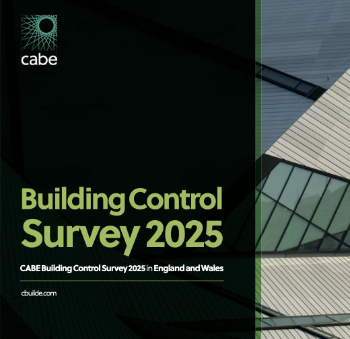BREEAM Recycled aggregates
Contents |
[edit] Aim and benefits
The aim of this credit is to recognise and encourage the use of recycled and secondary aggregates, thereby reducing the demand for virgin material and optimising material efficiency in construction.
The aim of the credit in pre-2018 schemes, however, is NOT to reduce embodied carbon/life cycle impacts.
[edit] When to consider
This first needs considering during your pre-assessment (typically during Concept Design), and needs working into specifications during detailed and technical design. A careful eye is required during procurement, as this is a common VE item for contractors to offer.
[edit] Step by step guidance
The below guidance is meant to represent best practice in BREEAM, and in reality includes the job of a BREEAM AP. Please note, it's relatively unrealistic to expect that you can monitor every step in the below process - do your best.
[edit] Concept Design
During pre-assessment and in post pre-assessment guidance, let structural and civil engineers clearly know you're targeting the credit. Ideally it should be mentioned in their stage 2 report, but that will unlikely provide the level of detail needed for BREEAM evidence.
Try to make sure at this point the engineers understand the calculation. Provide further supporting documents as required.
If this is a D&B project, make sure your pre-assessment and report clearly show that this credit is targeted, and if it is, who is responsible for achieving it. If appropriate, prepare a document for inclusion in the Employer's Requirements outlining the responsibilities of the contractor.
[edit] Detailed Design
Make sure that outline specifications include a requirement to use recycled aggregates as per the BREEAM criteria. Ask engineers for a copy of calculations/specifications (probably towards the end of this stage really) of how compliance is being met.
[edit] Technical Design
Make sure that any more detailed specialist sub contractor specifications include requirements.
If this is a D&B project, make sure commercial teams are aware of which packages this requirement is needed for. If possible, include the requirement in a sustainability prelims document to be included in sub contractor tenders.
If you're lucky enough to have package managers, make sure the relevant package managers are clear of the requirement for their package. If not, make sure the design manager knows these requirements.
Keep an eye on technical submissions from sub contractors to make sure recycled aggregates have been specified, where possible.
[edit] Construction
Request delivery notes for aggregates on site. Request details of concrete mixes where necessary alongside delivery notes.
You can take photos of concrete during construction site inspections, however, in reality all it will show is that concrete has been installed and not that there is any recycled content (although recycled aggregates can look different, dependent on source, it's not robust.)
Ask contractor's structural/civil engineers for final quantities as delivered of virgin/recycled aggregates used to confirm that compliance has been met on site. If you had very thorough design stage evidence, you may just be able to ask for confirmation that aggregates were installed as per the design stage specification, plus some delivery notes to make sure the wool isn't being pulled over your eyes.
[edit] In Use
There are no requirements relating to BREEAM In Use and recycled aggregates.
[edit] Questions to ask while seeking compliance
Please make sure you're on the same page as your team and looking at the recycled aggregate content of your concrete, rather than looking at the percentage of cement replacement used.
[edit] Tools and resources
BREEAM 2014 Issue 5.0 Criteria - WST 02
Recycled Aggregates Calculator
BRE Knowledge Base related articles
[edit] Tips and best practice
The calculation for WST 2 (2014) is not complicated, however it's surprisingly difficult to explain. Sometimes if communicating the calculation to engineers isn't going so well, sending over a calculator for them to play with makes it easier. See "Tools and Resources" for an example.
[edit] Typical evidence
Awaiting content
[edit] Applicable Schemes
The guidelines collated in this ISD aim to support sustainable best practice in the topic described. This issue may apply in multiple BREEAM schemes covering different stages in the life of a building, different building types and different year versions. Some content may be generic but scheme nuances should also be taken into account. Refer to the comments below and related articles to this one to understand these nuances. See this document for further guidelines.
- UK New Construction 2014
BRE Global does not endorse any of the content posted and use of the content will not guarantee the meeting of certification criteria.
[edit] Related articles on Designing Buildings
Featured articles and news
Grenfell Tower Principal Contractor Award notice
Tower repair and maintenance contractor announced as demolition contractor.
Passivhaus social homes benefit from heat pump service
Sixteen new homes designed and built to achieve Passivhaus constructed in Dumfries & Galloway.
CABE Publishes Results of 2025 Building Control Survey
Concern over lack of understanding of how roles have changed since the introduction of the BSA 2022.
British Architectural Sculpture 1851-1951
A rich heritage of decorative and figurative sculpture. Book review.
A programme to tackle the lack of diversity.
Independent Building Control review panel
Five members of the newly established, Grenfell Tower Inquiry recommended, panel appointed.
Welsh Recharging Electrical Skills Charter progresses
ECA progressing on the ‘asks’ of the Recharging Electrical Skills Charter at the Senedd in Wales.
A brief history from 1890s to 2020s.
CIOB and CORBON combine forces
To elevate professional standards in Nigeria’s construction industry.
Amendment to the GB Energy Bill welcomed by ECA
Move prevents nationally-owned energy company from investing in solar panels produced by modern slavery.
Gregor Harvie argues that AI is state-sanctioned theft of IP.
Heat pumps, vehicle chargers and heating appliances must be sold with smart functionality.
Experimental AI housing target help for councils
Experimental AI could help councils meet housing targets by digitising records.
New-style degrees set for reformed ARB accreditation
Following the ARB Tomorrow's Architects competency outcomes for Architects.
BSRIA Occupant Wellbeing survey BOW
Occupant satisfaction and wellbeing tool inc. physical environment, indoor facilities, functionality and accessibility.
Preserving, waterproofing and decorating buildings.






















